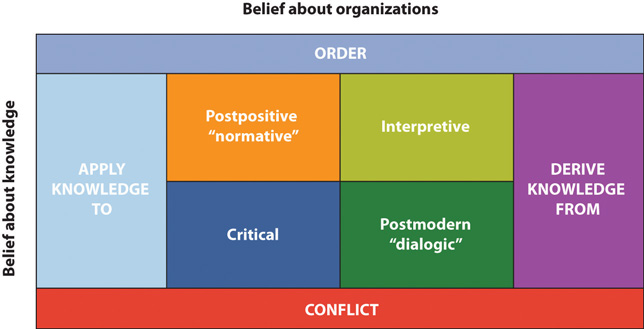Classical Theories of Organizational Communication
Im looking for a list or something that links communication theories theorists and scholars to the 7 traditions of communication. The key difference between classical and neo classical theory is that the classical theory assumes that a workers satisfaction is based only on physical and economic needs whereas the neoclassical theory considers not only physical and economic needs but also the job satisfaction and other social needs.

Organizational Communication Theory Research And Practice V1 0 Textbook Flatworld
There are tons of Google hits on the traditions themselves but I couldnt find anything about theories models or scholars associated with a particular tradition.

. Communication should be moved from bottom to top and from top to bottom. COMM 305 Theories of Communication. The story of systems theory begins in the mid 1950s when as we saw in Chapter 3 Classical Theories of Organizational Communication the heyday of classical management theory had passed and the human resources approach was ascendant.
The founding father of scientific management theory is Frederick W. The key themes in this article are that organizational communication is very important for organizational success and hence. 4 Theories of learning.
Classical organization theories Taylor 1947. Individual level group level and organizationalsystems level. Classical Organization Theory Neo-Classical Organizational Theory and Modern Organizational Theory.
As a result the behavioral school was a natural outgrowth of this revolutionary management experiment. Agency theory also called principal-agent theory a classic theory in the organizational economics literature was originally. List of organizational theories are-1.
A manager can group activities based on four models of departmentalization. Human Relations or Neo-Classical Theory 3. Readers are advised to consult the original sources of these theories for more details and insights on each theory.
There are three different types of organizational theory to predict and explain the process and also behavior patterns in an organizational setting. A report for the Institute for Employment Studies argues that flattening the hierarchy would shorten communication paths stimulate local innovation speed up decision making and create an environment where. The behavioral management theory is often called the human relations movement because it addresses the human dimension of work.
Max Weber theorized that hierarchical systems encourage informed decision making. Webers Ideal of Bureaucracy 6. According to business theories there are three levels of organizational behavior.
People should be allowed to participate in fixing work. His two most important works were Shop Management 1903. He was an American inventor and engineer.
3Classify and group the necessary work activities into manageable units. Functional geographical product and customer. Classical or Traditional Theory 2.
Some important organizational theories are. The individual level is the foundation of teamwork. The classical theory came into public in the 19 th century.
Organizational Behaviour is the only text to use a running case study to demonstrate the application of organizational behaviour in the real world helping students with limited or no real-life. Managers simply list and analyze all the tasks that need to be accomplished in order to reach organizational goals. Fayol 1949 deal with the formal organization and concepts to increase management efficiency.
In the 1990s the theory of hierarchy delayering emerged. In short classical theory ignored employee motivation and behavior. In this article we will explore the Classical Organizational Theory.
In 1956 the Canadian biologist Ludwig von Bertalanffy first published his general system theory which. Junior or senior classification or approval of instructor. Taylor presented scientific management concepts Weber gave the bureaucratic approach and Fayol developed the administrative theory of the organization.
This article provides an overview of the popular theories of organizational communication. Note that the following represents just a simplistic introduction to these theories. Thus in order to study the relationships between the individuals working together and their overall effect on the performance of the organization is well explained through the organizational theories.
As such this article compares and contrasts the theories of organizational communication as put forward by Max Weber Tompkins Cheney and Deetz. Theoretical approaches to human communication including selected theories of language behavior interpersonal small group and organizational interaction persuasion technology and mass communication. These are explained below-Classical Conditioning.
Classical conditioning is a type of conditioning in which an individual responds to some stimulus that would not ordinarily produce such as response. Organizational communication can.

Modern Theories Of Organizational Communication

Classical Management Theory Business Management Management Theories

Chester Irving Barnard Relatable Barnard Theories

Organizational Communication Theories Part 1 Youtube

Management Theories Scientific Management Management General Management

Modern Theories Of Organizational Communication
0 Response to "Classical Theories of Organizational Communication"
Post a Comment